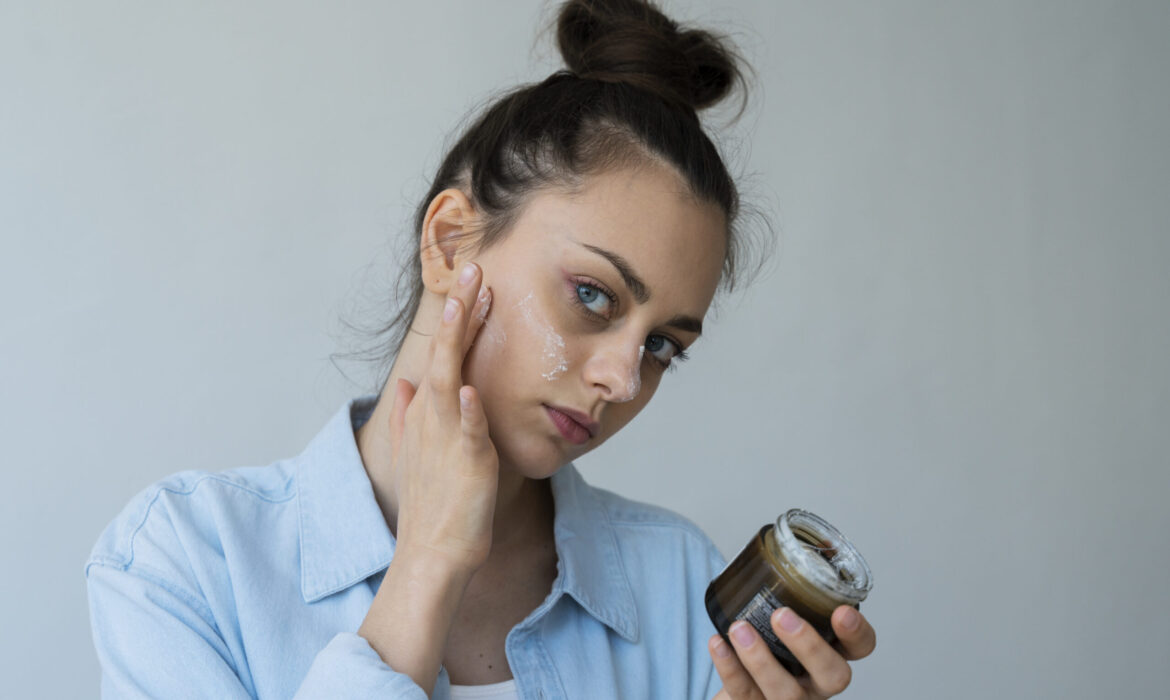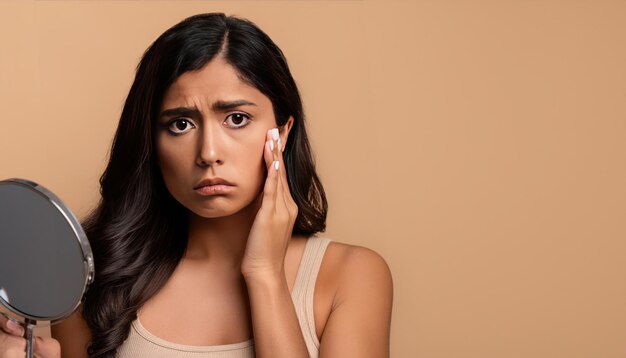How Many Grafts Do You Need for a Successful Hair Transplant?
How Many Grafts Do You Need for a Successful Hair Transplant?
Wondering how many grafts you need for a successful hair transplant? Learn graft requirements, costs, and expert insights
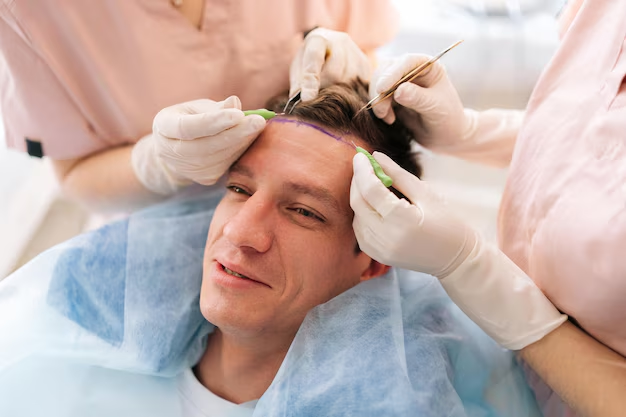
Hair loss can be emotionally challenging, especially when it starts affecting your confidence and appearance. For many, a hair transplant in Chennai offers a permanent, natural-looking solution. But one of the most common questions patients ask is: “How many grafts do I actually need for a successful hair transplant?”
The answer isn’t one-size-fits-all. It depends on your stage of baldness, hair density goals, and the technique used. At Dr. Hanan Dermatology Speciality and Trichology Clinic, we provide personalized assessments to determine the exact number of grafts required for long-term, natural results.
What Are Hair Grafts?
A hair graft is a small piece of skin containing hair follicles. Each graft can contain anywhere from 1 to 4 hair follicles. During a hair transplant, these grafts are extracted from the donor area (usually the back or sides of the scalp) and implanted into thinning or balding areas.
The number of grafts you need directly determines:
- The density of your new hair
- The coverage area (front hairline, crown, or full scalp)
- The cost of the procedure
Factors That Decide How Many Grafts You Need
Stage of Baldness (Norwood Scale)
Dermatologists use the Norwood Scale to classify male pattern baldness.
- Early stages (Norwood 2–3): May need 800–1,500 grafts.
- Moderate baldness (Norwood 4–5): Around 2,000–3,000 grafts.
- Advanced baldness (Norwood 6–7): 3,500–5,000+ grafts may be required.
Desired Hair Density
Some patients want a fuller, denser look, while others are satisfied with moderate coverage. The higher the density goal, the more grafts are needed.
Donor Area Availability
Your donor area (the back and sides of the scalp) must have enough strong, healthy follicles to supply grafts. If the donor area is limited, we plan carefully to balance density and coverage
Hair Characteristics
- Thicker hair → Fewer grafts needed for coverage
- Curlier hair → Appears denser
- Straight, fine hair → Requires more grafts for the same effect
Hair Characteristics
- FUE (Follicular Unit Extraction): Individual grafts are extracted. Best for precision and minimal scarring.
- FUT (Follicular Unit Transplantation): A strip of skin is removed and divided into grafts. Suitable for higher graft numbers in a single session.
Average Grafts Required for Different Areas
- Hairline Restoration: 800–1,200 grafts
- Frontal Zone (forehead area): 1,500–2,000 grafts
- Crown Area (vertex): 1,000–2,500 grafts
- Full Head Coverage: 3,000–5,000+ grafts
Example: A patient with moderate baldness (Norwood 4) may need around 2,500 grafts to restore the hairline and crown area with natural density.
How Many Sessions Will You Need?
Depending on your graft requirement and donor supply:
- Low grafts (1,500 or less): Usually completed in one session.
- High grafts (3,500+): May require two sessions for best results.
At Dr. Hanan Clinic, our dermatologists assess the scalp, donor density, and hair goals before planning the session count.
Does More Grafts Always Mean Better Results?
Not necessarily. While more grafts may give higher density, quality and placement matter more than quantity. Poorly placed or low-survival grafts won’t give natural results, no matter how many are implanted.
That’s why it’s essential to choose an experienced clinic with advanced technology. At Dr. Hanan Dermatology Speciality and Trichology Clinic, we use FDA-approved tools and follow strict protocols to ensure graft survival and natural outcomes.
Cost of Hair Transplant by Graft Count in Chennai
The cost of hair transplant in Chennai is usually calculated per graft:
- ₹30–₹45 per graft (depending on technique and clinic expertise).
So, a 2,000-graft transplant may cost around ₹60,000–₹90,000, while a 4,000-graft transplant could cost ₹1.2–₹1.6 lakhs.
Investing in the right number of grafts ensures not just coverage, but a natural hairline and lasting results.
Final Thoughts
The number of grafts you need for a successful hair transplant depends on baldness level, donor area, and personal goals. More grafts don’t always equal better results – skilled placement, advanced technology, and aftercare matter the most.
At Dr. Hanan Dermatology Speciality and Trichology Clinic, we take a personalized approach, ensuring every graft counts toward natural, lasting hair restoration.
Book Your Consultation Today!
Table of Contents
Scalp Health Before Hair Transplant: Why Preparation Matters
Scalp Health Before Hair Transplant: Why Preparation Matters
Healthy scalp before hair transplant ensures lasting results. At Dr. Hanan Clinic, Chennai, treating scalp issues boosts graft survival and growth.”
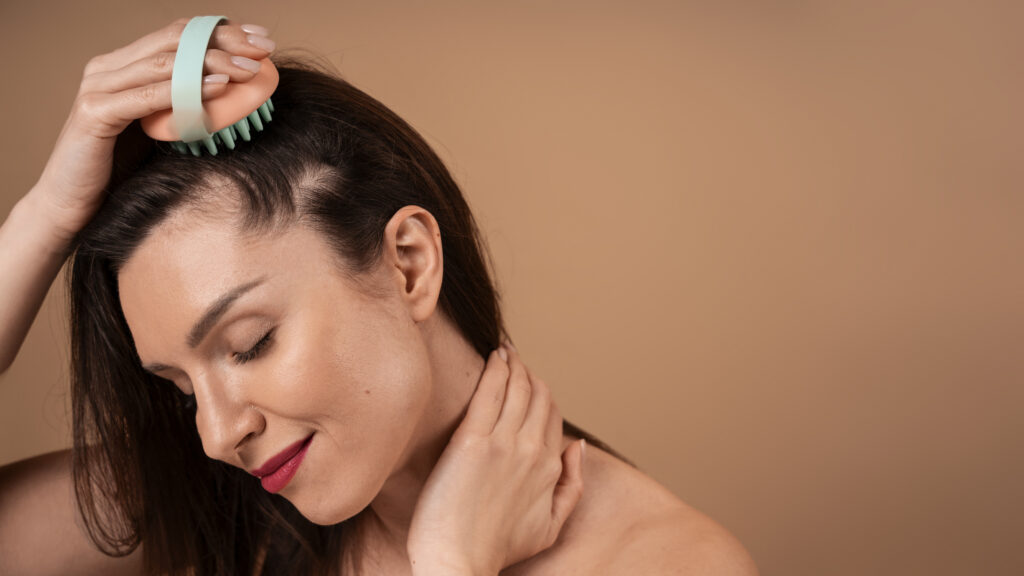
Hair transplantation has become one of the most effective and permanent solutions for baldness and thinning hair. However, what many patients don’t realize is that the success of a hair transplant depends heavily on the condition of the scalp before surgery. Preparing your scalp is not just a recommendation—it is a crucial step that influences graft survival, healing, and long-term results.
At Dr. Hanan Dermatology Speciality and Trichology Clinic, Chennai, we emphasize scalp health as the foundation for natural, lasting hair transplant outcomes. In this blog, our dermatologists explain why scalp preparation is important, what steps patients should take, and how to maximize transplant success.
Why Is Scalp Health Important Before a Hair Transplant?
Your scalp is the “soil” where transplanted hair grafts will grow. If the scalp is unhealthy—due to dandruff, infections, poor circulation, or inflammation—the newly transplanted follicles may not survive. A well-prepared scalp ensures:
- Stronger Graft Survival: Healthy scalp tissue provides proper blood supply and nutrients.
- Faster Healing: A clean, hydrated scalp recovers quicker with less post-surgical discomfort.
- Reduced Risk of Infection: Pre-treatment prevents scalp infections or folliculitis.
- Natural Results: A well-conditioned scalp ensures transplanted hair grows seamlessly with existing hair.
Patients often ask, “Does scalp condition really affect transplant success?” The answer is yes. Studies show that poor scalp health can lower graft survival rates by up to 20–30%.
Common Scalp Issues That Must Be Treated Before Transplant
Many patients in Chennai visit us with pre-existing scalp concerns. These must be addressed before the transplant procedure:
- Dandruff & Seborrheic Dermatitis – Flaky, itchy scalp increases inflammation.
- Scalp Infections – Bacterial or fungal infections can interfere with graft healing.
- Psoriasis & Eczema – Chronic skin conditions cause irritation and scarring.
- Oily & Congested Scalp – Excess sebum clogs pores and affects graft anchoring.
- Poor Circulation – Stress and lifestyle factors can reduce blood flow to hair follicles.
Our dermatologists treat these conditions in advance using medicated shampoos, antifungal therapies, and topical solutions before moving forward with surgery.
Steps to Prepare Your Scalp Before a Hair Transplant
Medical Consultation and Scalp Analysis
At Dr. Hanan Clinic, every patient undergoes trichoscopy and scalp analysis before planning surgery. This helps us identify dandruff, scalp infections, or poor skin barrier function. Based on the results, we customize a scalp preparation plan.
Use Dermatologist-Prescribed Shampoos
Patients are advised to use medicated shampoos containing:
- Ketoconazole (for dandruff and fungal issues)
- Zinc pyrithione (for oil control)
- Salicylic acid (for scalp exfoliation)
These shampoos reduce flakes, clean the pores, and create an ideal environment for transplant grafts.
Improve Blood Circulation
A healthy scalp requires good blood flow. We recommend:
- Scalp massage with dermatologist-approved oils to stimulate circulation.
- Low-Level Laser Therapy (LLLT) sessions for patients with poor scalp vascularity.
Lifestyle changes—regular exercise and stress management.
Avoid Smoking and Alcohol
Nicotine and alcohol reduce oxygen flow in the bloodstream, delaying wound healing. Patients must stop smoking and drinking at least 2 weeks before surgery to ensure better graft survival.
Treat Pre-Existing Conditions
If you have scalp psoriasis, eczema, or dermatitis, these must be treated first. At our clinic, we use topical steroids, anti-inflammatory serums, and oral medications when required. Transplantation is only scheduled once the scalp is stable
Maintain Scalp Hygiene
Simple hygiene measures matter:
- Wash hair regularly with mild shampoo.
- Avoid harsh styling products (gels, sprays).
- Do not scratch or pick at the scalp.
Nutrition for Scalp Health
Diet directly affects scalp condition. Patients are encouraged to include:
- Protein-rich foods (fish, eggs, legumes)
- Iron and zinc (green leafy vegetables, nuts)
- Omega-3 fatty acids (flaxseed, walnuts, salmon)
- Vitamin C and antioxidants (citrus fruits, berries)
Supplements may also be prescribed for patients with deficiencies.
Post-Preparation: What to Expect During Surgery
Once your scalp is ready, you’re fit for surgery. At Dr. Hanan Dermatology Speciality and Trichology Clinic, we use advanced methods like FUE (Follicular Unit Extraction) and FUT (Follicular Unit Transplantation). A healthy scalp allows:
- Faster healing of donor areas.
- Better anchoring of transplanted follicles.
- Reduced risk of complications.
Expert Advice from Dr. Hanan Clinic
Our dermatologists emphasize that a hair transplant isn’t just about surgery—it’s about preparation and aftercare. We guide patients at every step:
- Scalp health optimization before surgery.
- Customized aftercare plans.
Follow-up treatments like PRP therapy to boost graft survival.
For more insights, check out:
- Hair Transplant Aftercare Tips: Ensuring Long-Term Results
- Best Hair Transplant Clinic in Chennai
Final Thoughts
The success of your hair transplant doesn’t begin in the operation room—it begins weeks before, with proper scalp preparation. By treating dandruff, infections, and poor circulation in advance, you give your grafts the best possible chance to survive and thrive.
At Dr. Hanan Dermatology Speciality and Trichology Clinic, Chennai, our expert dermatologists ensure every patient is prepared, treated, and supported throughout the journey. Healthy scalp equals healthy results.
Book Your Consultation Today!
Table of Contents
Sun Damage on Indian Skin: Best Treatments and Prevention Tips
Sun Damage on Indian Skin: Best Treatments and Prevention Tips
Learn how sun damage affects Indian skin and explore dermatologist-approved treatments like peels, lasers & glutathione at Dr. Hanan Clinic, Chennai.
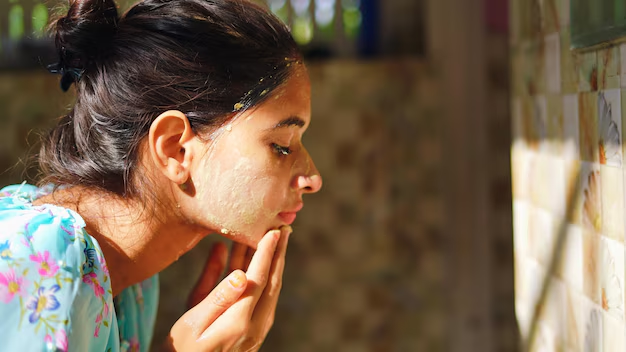
Living in Chennai means enjoying plenty of sunshine, but it also comes with the challenge of protecting your skin from intense UV rays, high humidity, and year-round heat. Sunscreen is one of the most powerful tools in preventing sun damage, pigmentation, premature aging, and skin cancer. Yet, many people struggle to find the right sunscreen that works for Chennai’s tropical weather—where sweating, oiliness, and stickiness are constant concerns.
At Dr. Hanan Dermatology Speciality and Trichology Clinic in Chennai, we regularly help patients choose sunscreens that are not only effective but also comfortable for daily use in hot and humid conditions. This blog will guide you on everything you need to know before buying your next sunscreen.
How Does Sun Damage Affect Indian Skin?
Indian skin falls mostly under Fitzpatrick skin types III to V, which means it tans easily but burns less frequently. While this provides some natural protection, it also results in hyperpigmentation, sunspots, and uneven skin tone.
Common signs of sun damage include:
- Dark patches and pigmentation (melasma, freckles)
- Premature wrinkles and fine lines
- Sun tan that doesn’t fade easily
- Rough, dry texture
- Loss of skin elasticity
- Increased risk of actinic keratosis (precancerous lesions)
Best Dermatologist-Approved Treatments for Sun Damage
Chemical Peels
Medical-grade chemical peels gently exfoliate the damaged skin layer, reducing sun tan, pigmentation, and dullness. Peels with glycolic acid, lactic acid, and TCA are highly effective for Indian skin when performed under expert supervision.
👉 Learn more about our Chemical Peel Treatments in Chennai
Laser Skin Resurfacing
Advanced lasers like Q-switched Nd:YAG and Fractional CO2 target pigmentation, sunspots, and fine lines. They work by stimulating collagen production and evening out skin tone. This is ideal for stubborn sun damage that doesn’t improve with creams or peels.
👉 Related: Laser Treatment for Scars
Hydrafacial and Medical Facials
Unlike salon facials, dermatologist-supervised Hydrafacials cleanse, exfoliate, and infuse the skin with antioxidants, leaving it hydrated and radiant. They are excellent for removing tan, pollution buildup, and early sun damage.
👉 Explore our Hydrafacial Treatments in Chennai.
Topical Dermatologist-Prescribed Creams
For stubborn pigmentation and dullness, IV Glutathione therapy combined with Vitamin C helps brighten skin from within by reducing melanin production and improving overall radiance.
Topical Dermatologist-Prescribed Creams
For stubborn pigmentation and dullness, IV Glutathione therapy combined with Vitamin C helps brighten skin from within by reducing melanin production and improving overall radiance.
Prevention Tips for Sun Damage
While treatments can reverse existing damage, prevention is key in Chennai’s tropical climate.
Apply Sunscreen Daily
Choose a broad-spectrum sunscreen SPF 50+ that protects against both UVA and UVB rays. Gel-based sunscreens are best for oily skin, while cream-based work for dry skin.
👉 Helpful read: How to Choose the Right Sunscreen for Chennai’s Hot and Humid Climate.
Wear Protective Clothing
Use hats, sunglasses, and long sleeves when outdoors. Opt for UPF-rated fabrics for added UV protection.
Avoid Peak Sun Hours
The sun’s rays are harshest between 10 AM – 4 PM. If possible, limit direct exposure during these hours.
Follow a Healthy Skincare Routine
- Cleanse your skin gently after outdoor exposure
- Use antioxidant serums at night
- Moisturize daily to repair barrier function
Stay Hydrated and Eat Smart
A diet rich in Vitamin C, Vitamin E, Omega-3 fatty acids, and antioxidants strengthens skin from within and helps fight oxidative damage caused by UV rays.
When to See a Dermatologist
If you notice:
- Persistent dark patches (melasma, pigmentation)
- Rough lesions or patches that don’t heal
- Premature wrinkles at a young age
- Uneven skin tone despite home care
…it’s time to consult a dermatologist. At Dr. Hanan Clinic, we provide personalized sun damage treatments in Chennai tailored to your skin type, ensuring long-lasting results.
Final Thoughts
Sun damage on Indian skin is common but preventable. With the right treatments like chemical peels, lasers, Hydrafacial, and glutathione therapy, combined with preventive steps like sunscreen and healthy habits, you can maintain youthful, radiant, and healthy skin.
At Dr. Hanan Dermatology Speciality and Trichology Clinic, our experts specialize in treating pigmentation, tanning, and sun-related skin concerns with advanced, safe, and proven solutions.
Book Your Consultation Today!
Table of Contents
How to Choose the Right Sunscreen for Chennai’s Hot and Humid Climate
How to Choose the Right Sunscreen for Chennai’s Hot and Humid Climate
Choosing the right sunscreen in Chennai’s hot, humid climate is key. Learn how SPF, broad-spectrum, and lightweight formulas protect your skin from sun damage with Dr. Hanan Clinic experts.
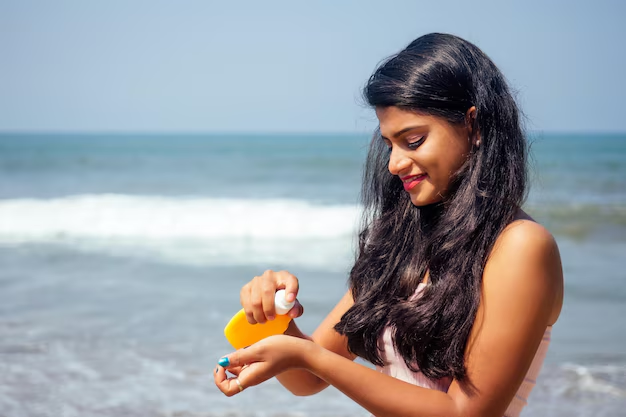
Living in Chennai means enjoying plenty of sunshine, but it also comes with the challenge of protecting your skin from intense UV rays, high humidity, and year-round heat. Sunscreen is one of the most powerful tools in preventing sun damage, pigmentation, premature aging, and skin cancer. Yet, many people struggle to find the right sunscreen that works for Chennai’s tropical weather—where sweating, oiliness, and stickiness are constant concerns.
At Dr. Hanan Dermatology Speciality and Trichology Clinic in Chennai, we regularly help patients choose sunscreens that are not only effective but also comfortable for daily use in hot and humid conditions. This blog will guide you on everything you need to know before buying your next sunscreen.
Why Sunscreen Matters in Chennai’s Climate
Chennai is one of the hottest metropolitan cities in India, with high UV index levels throughout the year. UV rays penetrate deeply into the skin, causing:
- Pigmentation & tanning
- Melasma and dark spots
- Premature wrinkles & sagging
- Increased risk of skin cancer
Humidity worsens the issue by making traditional sunscreens feel greasy or heavy. That’s why choosing the right formulation is crucial for Chennai’s weather.
Key Factors to Consider When Choosing Sunscreen in Chennai
Go for Broad-Spectrum Protection
In Chennai, where the sun shines intensely almost year-round, it’s not enough to just look at the SPF number on your sunscreen. What really matters is broad-spectrum protection. This ensures your sunscreen shields you from both UVA rays, which penetrate deeply and cause premature aging, melasma, and hyperpigmentation, and UVB rays, which damage the outer layer of skin, causing sunburns and increasing the risk of skin cancer.
Many patients visiting Dr. Hanan Clinic in Chennai struggle with stubborn pigmentation and tanning simply because they were using sunscreens that only protected against UVB. Look for labels like PA+++ or PA++++ (which indicate stronger UVA protection) along with SPF 30 or higher. This combination offers the safest and most reliable coverage in our tropical climate.
Pick the Right SPF for Chennai’s Sun
The SPF (Sun Protection Factor) tells you how well your sunscreen protects against UVB rays. In Chennai, where the UV index often stays at high or extreme levels, using a stronger SPF is crucial.
- SPF 30: Protects against about 97% of UVB rays. It’s enough if you spend most of your day indoors, commuting short distances, or working in air-conditioned offices.
- SPF 50 or higher: Blocks 98–99% of UVB rays, which makes it ideal for outdoor workers, athletes, beach-goers, and anyone exposed to sunlight for extended hours.
Dermatologists recommend SPF 50 as a safe standard in Chennai because it balances maximum protection with daily comfort. Remember, no SPF can block 100% of UV rays, which is why reapplication is just as important as SPF strength.
Hydrate Without Grease
One of the biggest complaints we hear at Dr. Hanan Dermatology Clinic is, “Sunscreens feel too sticky in Chennai’s weather.” The high humidity increases sweating, which makes heavy creams uncomfortable and often leads to clogged pores, acne breakouts, and greasy skin.
That’s why we recommend:
- Gel-based sunscreens → Perfect for oily and acne-prone skin, lightweight, and refreshing.
- Water-based sunscreens → Absorb quickly and don’t leave a white cast.
- Matte-finish sunscreens → Control excess oil and shine, great for those with seborrheic skin.
Look for sunscreens labeled non-comedogenic, oil-free, or mattifying. These prevent blocked pores and acne flare-ups while still giving strong UV protection. Patients who switched to these formulations often say they finally feel comfortable wearing sunscreen daily.
Consider Your Skin Type
Choosing sunscreen is not one-size-fits-all—it should be based on your unique skin type.
- Oily/Acne-Prone Skin: Go for gel or fluid sunscreens with ingredients like niacinamide, zinc oxide, or silica, which help control sebum while protecting the skin.
- Dry Skin: Cream or lotion-based sunscreens with hyaluronic acid, ceramides, or glycerin lock in moisture and prevent the skin from drying out in air-conditioned environments.
- Sensitive Skin: Use mineral sunscreens with titanium dioxide or zinc oxide. They sit on top of the skin and deflect UV rays instead of absorbing them, making them gentler and less irritating.
At Dr. Hanan Clinic, our dermatologists first analyze your skin and lifestyle, then recommend sunscreens tailored to you—because the wrong sunscreen often worsens existing problems like acne, pigmentation, or sensitivity.
Sweat & Water Resistance is Key
In Chennai’s climate, sweat is unavoidable. Whether you’re commuting, exercising, or just stepping outside, your sunscreen can wear off quickly if it isn’t resistant.
Look for sunscreens labeled:
- “Water-resistant” (lasts 40 minutes in water/sweat)
- “Very water-resistant” (lasts up to 80 minutes)
These formulations are especially important for:
- Outdoor workers
- Swimmers and athletes
- People with naturally oily or sweaty skin
Even with water resistance, you still need to reapply, but these sunscreens provide added reliability for longer protection in Chennai’s humidity.
Reapply Every 2–3 Hours
A major misconception is that applying sunscreen once in the morning is enough. But in Chennai’s heat, sunscreen breaks down faster due to sweat, sebum, and sun exposure.
Dermatologists recommend:
- Reapplying every 2–3 hours when outdoors.
- Using powder or spray sunscreens for easy reapplication on top of makeup.
- Carrying a travel-size sunscreen for convenience.
Skipping reapplication is one of the top reasons patients still develop pigmentation and tanning even though they’re “using sunscreen daily.” Consistency and correct usage are just as important as the sunscreen brand itself.
Dermatologist-Recommended Ingredients to Look For
- Zinc oxide & titanium dioxide → Best for sensitive skin, provides physical UV barrier.
- Niacinamide → Controls oil and reduces pigmentation.
- Antioxidants (Vitamin C, E) → Provide extra protection from free radicals.
- Hyaluronic Acid → Keeps skin hydrated without greasiness.
Common Mistakes to Avoid
- Applying too little sunscreen (you need 2–3 fingers’ worth for face & neck).
- Skipping sunscreen on cloudy days (UV rays still penetrate).
- Using makeup with SPF alone (not enough coverage).
- Not reapplying every 2–3 hours.
Sunscreen Recommendations at Dr. Hanan Clinic
At Dr. Hanan Dermatology Speciality and Trichology Clinic in Chennai, we recommend sunscreens tailored to:
- Daily office wear – Lightweight, SPF 50, matte finish.
- Outdoor workers/athletes – Sweat-resistant, SPF 50+, gel-based.
- Sensitive/Acne-prone skin – Mineral-based, fragrance-free sunscreens.
We also integrate sunscreen into comprehensive skin care plans for pigmentation, acne scars, and anti-aging.
Sunscreen Recommendations at Dr. Hanan Clinic
At Dr. Hanan Dermatology Speciality and Trichology Clinic in Chennai, we recommend sunscreens tailored to:
- Daily office wear – Lightweight, SPF 50, matte finish.
- Outdoor workers/athletes – Sweat-resistant, SPF 50+, gel-based.
- Sensitive/Acne-prone skin – Mineral-based, fragrance-free sunscreens.
We also integrate sunscreen into comprehensive skin care plans for pigmentation, acne scars, and anti-aging.
Final Thoughts
Choosing the right sunscreen for Chennai’s hot and humid climate is not just about comfort—it’s about long-term skin protection. With the right sunscreen, you can prevent pigmentation, tanning, early aging, and serious skin damage while staying fresh and comfortable throughout the day.
At Dr. Hanan Clinic, Chennai, our dermatologists help patients find sunscreens and skin care plans perfectly suited for their lifestyle and skin type.
Frequently Asked Questions
No, oily skin is not harmful. In fact, it slows down visible aging. However, excess oil can cause acne, clogged pores, and pigmentation if not managed.
Oily skin cannot be “cured” as it is largely genetic and hormonal. But with proper skincare, lifestyle changes, and medical treatments, it can be effectively controlled.
Choose a lightweight, oil-free moisturizer with hyaluronic acid or niacinamide to balance hydration without clogging pores.
Book Your Consultation Today!
Table of Contents
Oily Skin Care in Chennai: Dermatologist-Approved Tips
Oily Skin Care in Chennai: Dermatologist-Approved Tips
Expert oily skincare in Chennai – dermatologist tips to control shine, prevent acne, and keep your skin clear at Dr. Hanan Clinic
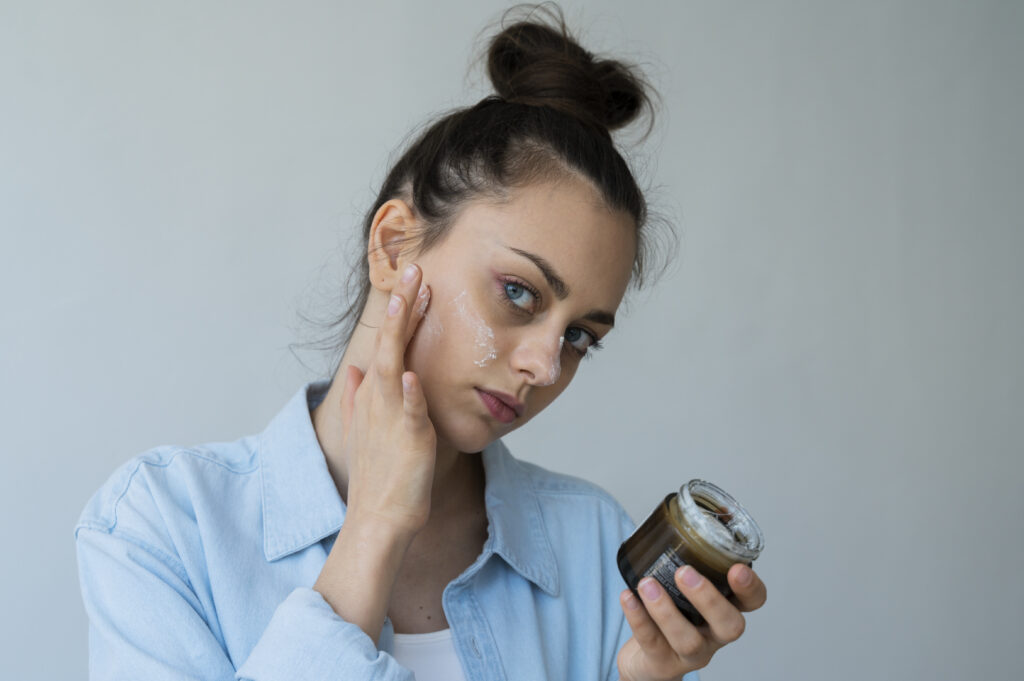
Oily skin is one of the most common skin concerns faced by people in Chennai. The city’s hot, humid, and tropical climate often worsens sebum (oil) production, leading to acne, clogged pores, dullness, and an overall greasy appearance. While oily skin is not entirely bad—since it helps keep your skin naturally moisturized—it does require special care and dermatologist-recommended routines to keep it healthy, balanced, and blemish-free.
At Dr. Hanan Dermatology Speciality and Trichology Clinic in Chennai, we regularly treat patients struggling with oily skin, acne breakouts, and related concerns. In this blog, we’ll break down the science behind oily skin, practical care tips, and advanced treatments available at our clinic.
Why Is Oily Skin So Common in Chennai?
Chennai’s weather plays a big role in skin health. High humidity and heat increase sweating and sebum secretion. Combined with pollution, dust, and sun exposure, this creates the perfect environment for:
- Acne and pimples
- Enlarged pores
- Whiteheads and blackheads
- Greasy texture and shine
- Pigmentation from post-acne marks
Genetics and hormones also influence oily skin. Teenagers and young adults are especially prone due to hormonal fluctuations, while stress, diet, and lifestyle can worsen the condition
Signs You Have Oily Skin
You may have oily skin if you notice:
- Shiny or greasy appearance a few hours after washing your face
- Frequent breakouts or clogged pores
- Makeup sliding off quickly
- Enlarged or visible pores
- Rough or uneven texture
If this sounds familiar, your skin needs oil-control skincare and professional dermatology support.
Dermatologist-Approved Skincare Routine for Oily Skin
Managing oily skin is not about stripping away all the oil but balancing sebum production while keeping your skin healthy and hydrated. Here’s a detailed routine recommended by dermatologists at Dr. Hanan Dermatology Speciality and Trichology Clinic, Chennai:
Cleanse Gently, Not Harshly
One of the biggest mistakes people with oily skin make is over-washing. Harsh cleansing removes natural oils completely, which forces your sebaceous glands to produce even more oil, making the skin greasier.
Instead, use a mild foaming or gel-based cleanser formulated for oily or acne-prone skin. Look for ingredients such as:
- Salicylic Acid – unclogs pores and reduces blackheads/whiteheads
- Niacinamide – controls oil secretion and soothes inflammation
- Tea Tree Extract – has antibacterial properties that help prevent breakouts
Tip from dermatologists: Wash your face only twice a day—once in the morning and once before bed. Midday oiliness can be managed with blotting papers instead of repeated washing.
Exfoliate Wisely
Exfoliation is crucial for oily skin because dead skin cells mix with excess sebum and cause clogged pores and acne. But scrubbing too aggressively can damage your skin barrier.
Dermatologists recommend chemical exfoliation over physical scrubs. Options include:
- Glycolic Acid – improves cell turnover and reduces dullness
- Salicylic Acid – penetrates deep into pores to clear oil and acne-causing bacteria
- Mandelic Acid – gentle option for sensitive, oily skin
Best practice: Exfoliate 1–2 times per week. Over-exfoliation can trigger redness, dryness, and ironically, even more oil production.
Hydrate Without Grease
Many people assume oily skin doesn’t need moisturizer. That’s a myth. In reality, skipping moisturizer dehydrates the skin, signaling your sebaceous glands to produce more oil to compensate.
Choose a lightweight, non-comedogenic moisturizer with:
- Hyaluronic Acid – deeply hydrates without heaviness
- Aloe Vera Extract – calms irritation and balances oil
- Ceramides – strengthen the skin barrier and reduce sensitivity
Dermatologist tip: Go for gel-based moisturizers instead of creams. They provide hydration while leaving a matte finish, perfect for Chennai’s humid climate.
Don’t Skip Sunscreen
Sunscreen is non-negotiable—even for oily skin. Without protection, UV rays trigger pigmentation, tanning, acne scars, and premature aging.
For oily skin types, avoid heavy lotions. Instead, use:
- Gel-based sunscreens
- Matte-finish sunscreens
- Oil-free SPF 30+ formulations
Expert advice: Apply sunscreen 30 minutes before sun exposure and reapply every 2–3 hours if outdoors. This not only protects against sun damage but also prevents post-inflammatory pigmentation from acne.
Mind Your Diet
Oily skin isn’t just about topical care—your diet and lifestyle play a huge role. Foods high in refined sugar, fried oils, and dairy can increase inflammation and worsen breakouts.
Include more of:
- Leafy greens and fresh fruits – rich in antioxidants that control oil oxidation
- Omega-3 fatty acids (fish, walnuts, flaxseeds) – reduce inflammation and sebum levels
- Vitamin C-rich foods (oranges, amla, bell peppers) – brighten skin and repair damage
- Plenty of water – keeps skin hydrated and balances oil production
Tip: Reduce intake of carbonated drinks, spicy fast food, and chocolate, as they can aggravate oily skin and acne.
Home Remedies: Do They Work for Oily Skin?
Home remedies like lemon juice, Multani Mitti (Fuller’s Earth), or aloe vera are popular but must be used with caution. They may provide temporary relief but can irritate sensitive skin or worsen breakouts. Always consult a dermatologist before trying DIY methods.
Advanced Treatments for Oily Skin at Dr. Hanan Clinic
When home care isn’t enough, advanced treatments can transform oily skin. At Dr. Hanan Dermatology Speciality and Trichology Clinic in Chennai, we provide safe and effective options such as:
- Chemical Peels: Control oil, unclog pores, and reduce acne scars.
- Laser Skin Resurfacing: Tightens pores and improves overall skin texture.
- Hydrafacial (Oil-Control Protocol): Deep cleanses and balances hydration.
- Microneedling with PRP or Exosomes: Reduces oiliness and improves acne scars.
- Medical-Grade Skincare Prescriptions: Customized serums, retinoids, and oil-control formulations.
These dermatologist-supervised treatments ensure long-term skin balance and visible improvement.
Final Thoughts
Oily skin in Chennai can feel like a never-ending struggle, but with the right skincare routine and professional treatments, it is possible to achieve healthy, clear, and radiant skin. At Dr. Hanan Dermatology Speciality and Trichology Clinic, our dermatologists customize solutions based on your skin type, lifestyle, and concerns to deliver long-lasting results.
Frequently Asked Questions
No, oily skin is not harmful. In fact, it slows down visible aging. However, excess oil can cause acne, clogged pores, and pigmentation if not managed.
Oily skin cannot be “cured” as it is largely genetic and hormonal. But with proper skincare, lifestyle changes, and medical treatments, it can be effectively controlled.
Choose a lightweight, oil-free moisturizer with hyaluronic acid or niacinamide to balance hydration without clogging pores.
Book Your Consultation Today!
Table of Contents
The Role of Diet and Lifestyle in Hair Transplant Success
The Role of Diet and Lifestyle in Hair Transplant Success
Maximize hair transplant success with expert-backed diet and lifestyle tips from Dr. Hanan Clinic, Chennai.

Hair transplant surgery has become one of the most effective solutions for hair loss, especially for those struggling with baldness or thinning hair. But did you know that the long-term success of a hair transplant doesn’t depend only on the surgeon’s skills or the technique used? Your diet and lifestyle choices play a critical role in how well your transplanted hair grows, strengthens, and lasts.
At Dr. Hanan Dermatology Speciality and Trichology Clinic, Chennai, we believe in a holistic approach to hair restoration—combining advanced surgical expertise with proper nutrition and healthy living to maximize results.
Why Diet and Lifestyle Matter After Hair Transplant
A hair transplant involves relocating healthy hair follicles from the donor area (usually the back of the scalp) to thinning or bald spots. Once transplanted, these follicles need a healthy environment, proper blood supply, and essential nutrients to grow strong.
Poor nutrition, lack of rest, stress, smoking, or alcohol consumption can weaken this process, leading to slower recovery and reduced graft survival. On the other hand, following a nutrient-rich diet and balanced lifestyle significantly boosts transplant outcomes.
Essential Nutrients for Hair Growth
Protein – The Building Block of Hair
Hair is primarily made of keratin, a protein. Consuming enough protein supports stronger hair shafts and healthy follicle function.
Foods to include: Eggs, fish, chicken, dairy, lentils, beans, nuts, and seeds.
Iron – For Oxygen Supply to Hair Follicles
Iron deficiency is a leading cause of hair loss. Adequate levels ensure that hair follicles receive enough oxygen through red blood cells.
Foods to include: Spinach, red meat (in moderation), pumpkin seeds, lentils, and fortified cereals.
Omega-3 Fatty Acids – For Scalp Health
Omega-3s help reduce inflammation, nourish hair follicles, and improve scalp circulation.
Foods to include: Salmon, walnuts, flaxseeds, chia seeds, and soybeans.
Vitamins – Fuel for Strong Hair Growth
- Vitamin A: Regulates sebum production.
- Vitamin C: Improves collagen production and iron absorption.
- Vitamin D: Supports follicle regeneration.
Vitamin E: Antioxidant that prevents oxidative stress on follicles.
Foods to include: Citrus fruits, sweet potatoes, nuts, leafy greens, mushrooms, and fortified dairy.
Biotin & Zinc – Hair Strength Boosters
Biotin supports keratin production, while zinc aids in tissue repair and follicle recovery.
Foods to include: Eggs, whole grains, sunflower seeds, oysters, and legumes.
Lifestyle Habits That Support Hair Transplant Success
Your hair transplant results depend not only on the surgery itself but also on the way you care for your body afterward. Adopting the right lifestyle habits helps your new hair follicles heal, grow stronger, and last for years.
Sleep and Rest – The Foundation of Recovery
After a transplant, your scalp needs time to heal and adapt. Sleep is when the body naturally repairs tissues, reduces inflammation, and promotes circulation to the scalp. Aim for 7–8 hours of uninterrupted sleep daily.
Tip: For the first week, sleep with your head slightly elevated using an extra pillow. This minimizes swelling and prevents accidental rubbing of grafts on the pillow.
Stress Management – Protect Your Hair Growth Cycle
High stress levels increase cortisol, which disrupts the natural hair growth cycle and can trigger conditions like telogen effluvium (stress-related shedding). Managing stress ensures transplanted follicles remain strong.
Practical ways to manage stress:
- Daily yoga or stretching
- Meditation apps like Headspace or Calm
- Spending time outdoors for Vitamin D and relaxation
- Limiting excessive screen time before bed
Hydration – Fuel for Follicle Health
Water makes up nearly 25% of the weight of a single hair strand. Staying hydrated ensures nutrients and oxygen are delivered efficiently to the hair follicles.
How much water is enough?
- 2–3 liters daily, more if you sweat heavily or live in hot climates like Chennai
- Include hydrating foods such as cucumbers, watermelon, and citrus fruits
Quit Smoking and Limit Alcohol – Non-Negotiables for Hair Growth
Smoking causes vasoconstriction (narrowing of blood vessels), reducing blood flow to the scalp. This deprives grafts of oxygen and nutrients, lowering their survival rate. Alcohol, on the other hand, dehydrates the body and impairs liver function, limiting nutrient absorption.
Actionable advice:
- Quit smoking at least 2 weeks before and after surgery for best results
- Avoid alcohol for the first 7–10 days post-surgery to minimize complications
- Replace alcohol with healthier alternatives like coconut water, fresh juices, or green tea
Scalp Care Post-Transplant – Protecting Your Investment
Your scalp is most vulnerable in the initial healing phase. Improper care can dislodge grafts or cause infections.
Key scalp care steps:
- Wash only as instructed by your dermatologist (usually after 48–72 hours)
- Use mild, dermatologist-recommended shampoos
- Avoid scratching or picking at scabs—these are part of the healing process
- Protect your scalp from direct sunlight for at least 4 weeks; wear a loose cap if going outside
- Avoid hair oils, dyes, or chemical treatments until your doctor approves
How Long Before Diet and Lifestyle Show Results?
Patients usually begin to see new hair growth 3–4 months post-surgery, with visible density by 9–12 months. Consistently following a balanced diet and healthy lifestyle can improve graft survival rates and ensure your transplanted hair looks natural and long-lasting.
Expert Dermatologist Tips for Healthy Winter Skin
- Avoid harsh scrubs and alcohol-based toners.
- Use a humidifier indoors to maintain moisture.
- Protect hands with gloves when outdoors.
- Schedule regular skin checkups to prevent winter-related flare-ups like eczema.
Final Thoughts
A hair transplant is not just a surgical procedure—it’s a long-term commitment to your scalp and overall health. At Dr. Hanan Dermatology Speciality and Trichology Clinic, Chennai, we guide our patients not only through surgery but also in adopting the right diet and lifestyle habits to ensure their results last a lifetime.
Healthy living means healthy hair—and your transplanted grafts deserve the best care.
Book Your Consultation Today!
Table of Contents
Winter Skin Care in Chennai: How to Keep Your Skin Healthy
Winter Skin Care in Chennai: How to Keep Your Skin Healthy
Winter skin care in Chennai – expert tips from Dr. Hanan Clinic to keep your skin healthy, hydrated, and glowing in dry weather
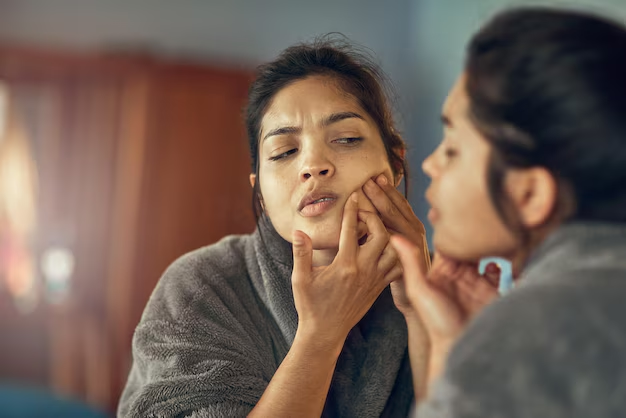
While Chennai’s winters are milder compared to northern India, the drop in humidity and cool breezes from November to February can still take a toll on your skin. Many people experience dryness, flakiness, itching, or even eczema flare-ups during this period. Even though we don’t get extreme cold, the shift in temperature, combined with indoor fans or air conditioning, can strip your skin of essential moisture.
At Dr. Hanan Dermatology Speciality and Trichology Clinic, we see a spike in skin dryness, pigmentation, and hair issues every winter. This guide combines dermatologist-backed insights, science-driven tips, and proven treatments to help you enjoy soft, hydrated, and glowing skin all season.
How Winter Affects Your Skin in Chennai
Even in tropical climates, seasonal changes affect skin function:
- Reduced Humidity – Air moisture drops, causing faster water loss from your skin barrier.
- Cooler Winds – Winds can dehydrate exposed skin and lips.
- Lifestyle Shifts – Hot showers, less water intake, and heavier clothing can aggravate dryness.
- Air Conditioning – In offices or homes, AC further reduces indoor humidity.
Over time, this leads to:
- Tightness or rough texture
- Visible dry patches or scaling
- Fine lines looking more pronounced
- Itchy or irritated skin
- Increased sensitivity to skincare products
Step-by-Step Winter Skin Care Routine for Chennai
Gentle Cleansing – Avoid Harsh Soaps
Switch from foaming cleansers to hydrating, pH-balanced cleansers that remove dirt without stripping natural oils. Look for ingredients like glycerin, ceramides, or hyaluronic acid.
Lock in Moisture – The Right Way
Moisturizing is your best defense against dryness. Apply a dermatologist-recommended moisturizer right after cleansing, when skin is still damp. For face: use lightweight creams with hyaluronic acid, squalane, or niacinamide. For body: richer lotions or butters with shea butter or ceramides.
Sunscreen – Yes, Even in Winter
UV rays are present year-round in Chennai, and cloudy skies don’t block UVA damage. Use broad-spectrum SPF 30+ daily to prevent pigmentation and premature aging.
Exfoliate Wisely
Over-exfoliation in winter can strip essential oils, worsening dryness. Use mild lactic acid or enzyme-based exfoliants once a week to remove dead skin without irritation.
Professional Winter Skin Treatments at Dr. Hanan Clinic
Hydrafacial – Instant Hydration Boost
A Hydrafacial deeply cleanses, exfoliates, and infuses hydrating serums – perfect for winter dullness.
Chemical Peels – Gentle Rejuvenation
Mild glycolic or lactic acid peels help improve skin texture and hydration while brightening the complexion.which can thin the skin and cause long-term damage.
Laser Skin Rejuvenation
Fractional and Q-switched lasers can address pigmentation, fine lines, and dull skin caused by seasonal changes.
Medi-Fusion Glow Therapy
A custom blend of vitamin C, niacinamide, and hyaluronic acid serums is infused into the skin for deep nourishment and glow.
Hair & Scalp Care During Winter
It’s not just your skin that suffers—your scalp can also get dry, itchy, and flaky during winter.
- Switch to sulfate-free shampoos.
- Oil your hair lightly before washing.
- Consider PRP or mesotherapy if you’re noticing seasonal hair thinning.
Common Winter Skin Problems in Chennai & How to Prevent Them
Dry Patches and Flakiness
Use thicker creams and avoid very hot showers.
Pigmentation Worsening
Wear sunscreen daily and consider glutathione therapy for deeper brightening.
Lip Cracking
Apply petroleum jelly or lip balms with SPF
Expert Dermatologist Tips for Healthy Winter Skin
- Avoid harsh scrubs and alcohol-based toners.
- Use a humidifier indoors to maintain moisture.
- Protect hands with gloves when outdoors.
- Schedule regular skin checkups to prevent winter-related flare-ups like eczema.
Final Thoughts
Winter in Chennai might not bring snow, but it still requires special care for your skin and hair. With the right dermatologist-guided routine and professional treatments, you can keep your skin hydrated, radiant, and healthy throughout the season.
For a personalized winter skin care plan, visit Dr. Hanan Dermatology Speciality and Trichology Clinic in Padur, OMR, Chennai.
Book Your Consultation Today!
Table of Contents
Dark Spot Removal: What Works and What’s Just a Waste of Time
Dark Spot Removal: What Works and What’s Just a Waste of Time
Get expert tips on dark spot removal and prevention from Dr. Hanan Dermatology Clinic, Chennai for brighter, even-toned skin
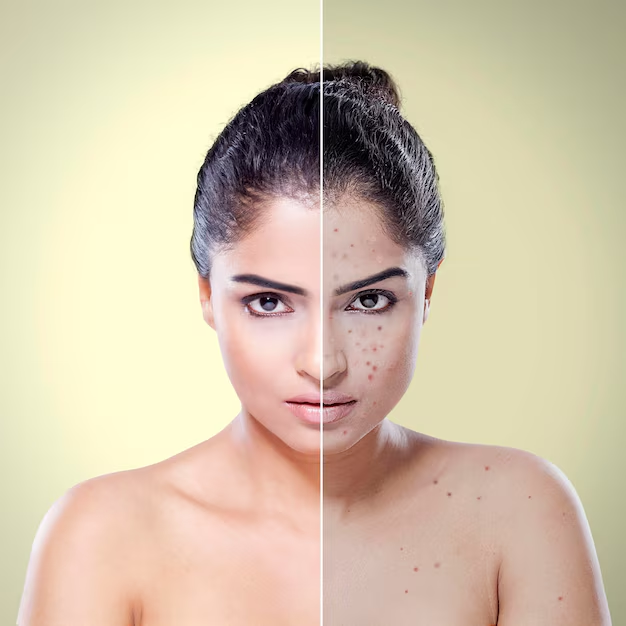
Dark spots, also called hyperpigmentation, are one of the most common skin concerns we see at Dr. Hanan Dermatology Speciality and Trichology Clinic in Chennai. They appear when melanin production increases in certain areas, leaving behind patches of discoloration.
While there are countless creams, DIY hacks, and viral skincare trends claiming to remove dark spots overnight, the truth is—many of them don’t work or can even make pigmentation worse.
In this blog, we break down what really works for dark spot removal, what’s a waste of time, and how to choose the safest treatment for your skin type.
What Causes Dark Spots?
Before discussing treatments, it’s important to understand why dark spots form. Common causes include:
- Sun exposure – UV rays stimulate excess melanin production.
- Post-inflammatory hyperpigmentation (PIH) – After acne, eczema, or injury.
- Melasma – Often triggered by hormonal changes or pregnancy.
- Aging – Age spots or liver spots appear as the skin’s repair mechanisms slow down.
- Medications or medical conditions – Certain drugs can cause pigmentation changes.
Pro Tip: Identifying the cause is key—treating pigmentation without addressing the root cause often leads to recurrence.
Treatments That Actually Work for Dark Spots
Here’s what dermatologists in Chennai recommend based on science and clinical results.
First Consultation: The Foundation of Success
Chemical peels use controlled exfoliation with ingredients like glycolic acid, salicylic acid, or TCA to remove damaged skin layers and reveal fresher, evenly toned skin.
- Best for: Sun spots, acne marks, and uneven texture.
- Downtime: Minimal to moderate, depending on peel strength.
- Results: Noticeable improvement in 3–6 sessions.
Learn more: Chemical Peels in Chennai: Benefits & Cost
Laser Treatments for Pigmentation
Q-switched Nd:YAG lasers and Fractional CO2 lasers target melanin deposits directly, breaking them into tiny particles that fade naturally over time.
- Best for: Stubborn pigmentation, melasma, age spots.
- Downtime: Minimal; mild redness for 1–2 days.
- Results: Significant fading in 2–4 sessions.
Related treatment: Laser Skin Resurfacing in Chennai
Topical Prescription Creams
Dermatologists may prescribe hydroquinone, azelaic acid, retinoids, or vitamin C serums for gradual pigmentation reduction.
- Best for: Early or mild pigmentation.
- Downtime: None, but results take time (6–12 weeks).
- Caution: Avoid over-the-counter bleaching creams—they can cause irritation or rebound pigmentation.
Microneedling with Exosomes or PRP
Microneedling creates micro-injuries to boost collagen and improve skin turnover. When combined with PRP (Platelet-Rich Plasma) or exosomes, it delivers brightening agents deeper into the skin.
- Best for: PIH, acne scars, uneven skin tone.
- Downtime: 1–3 days of redness.
- Results: Progressive improvement over multiple sessions.
Learn more: Microneedling with PRP in Chennai
Glutathione Skin Brightening
IV glutathione therapy is an antioxidant-based treatment that helps reduce melanin production and promotes overall skin clarity.
- Best for: General skin brightening and pigmentation reduction.
- Downtime: None.
- Results: Noticeable glow in 4–6 weeks with consistent sessions.
Read this: Benefits of Glutathione for Skin & Health
Treatments That Are a Waste of Time (or Risky)
While some at-home remedies can improve mild pigmentation, many are ineffective or harmful.
❌ Lemon Juice & Harsh DIY Remedies
While lemon juice contains vitamin C, it can irritate skin, cause burns, and worsen pigmentation when exposed to sunlight.
❌ Over-the-Counter Bleaching Creams
These often contain unsafe levels of hydroquinone or steroids, which can thin the skin and cause long-term damage.
❌ Unproven Viral Hacks
Social media trends like using toothpaste, baking soda, or raw turmeric pastes for pigmentation lack scientific backing and can cause allergic reactions.
❌ Single-Session Promises
Any product or clinic promising instant dark spot removal without downtime is likely offering false claims. Pigmentation treatment takes time, consistency, and the right approach.
How to Prevent Dark Spots from Returning
Prevention is as important as treatment.
- Daily sunscreen use – Broad-spectrum SPF 30 or higher.
- Avoid excessive sun exposure – Wear hats and sunglasses.
- Follow post-treatment care – As advised by your dermatologist.
- Address skin issues early – Treat acne or inflammation before they leave marks.
When to See a Dermatologist
If your dark spots are spreading, changing in size/shape, or not improving with over-the-counter products, book a consultation. At Dr. Hanan Clinic, we use skin analysis tools to customize your treatment plan and ensure safe, lasting results.
Final Thoughts
Dark spot removal is not about quick fixes—it’s about safe, targeted treatments that address the root cause. At Dr. Hanan Dermatology Speciality and Trichology Clinic, we combine medical expertise with proven technologies to help you achieve clear, even-toned, and radiant skin.
Book Your Consultation Today!
Table of Contents
What Happens in Your First Hair Transplant Procedure? Expert Insights
What Happens in Your First Hair Transplant Procedure? Expert Insights
Thinking about your first hair transplant? Learn the complete procedure, recovery tips, and expert insights
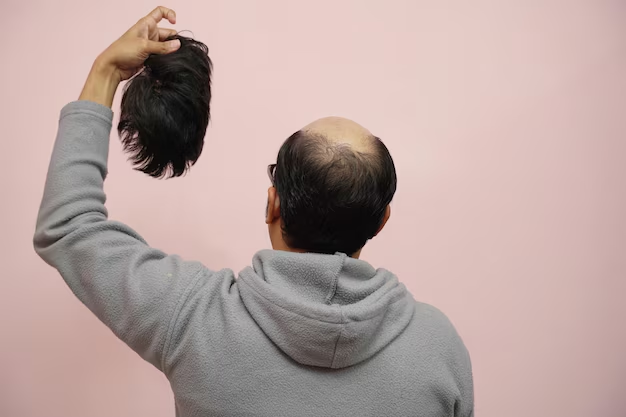
Hair loss is a concern for millions worldwide, and for many, a hair transplant is the most reliable way to restore a fuller head of hair. But if you’re new to this journey, you might be wondering—what happens during the first hair transplant procedure?
At Dr. Hanan Dermatology Speciality and Trichology Clinic in Chennai, we guide our patients through every step of the process, ensuring they understand what to expect before, during, and after their first procedure. This blog will explain the entire process in detail, backed by expert insights and real-world patient experiences.
Understanding Hair Transplant Basics
A hair transplant is a minimally invasive surgical procedure that involves moving healthy hair follicles from a donor area (usually the back or sides of the scalp) to areas affected by hair thinning or baldness.
The goal is to achieve natural-looking, long-lasting results by using your own hair follicles, which continue to grow after being transplanted.
Common hair transplant methods include:
- FUE (Follicular Unit Extraction): Individual hair follicles are extracted and implanted.
- FUT (Follicular Unit Transplantation/Strip Method): A strip of scalp is removed, and hair follicles are dissected for transplantation.
Related Read: Best Hair Transplant Clinic in Chennai
Who is the Right Candidate for a Hair Transplant?
Before the procedure, your dermatologist will assess:
- Age & hair loss stage
- Donor hair availability
- Overall scalp health
- Medical history
You might be an ideal candidate if you have:
- Male or female pattern baldness (androgenetic alopecia)
- Hair loss from injury or burns
- Adequate healthy donor hair
First Consultation: The Foundation of Success
The first step in any hair transplant journey is the initial consultation. At Dr. Hanan Clinic, we:
- Conduct a scalp analysis using trichoscopy
- Evaluate your donor area density
- Discuss your hairline design goals
- Explain expected results & timelines
- Provide a personalized treatment plan
This stage is crucial because it sets realistic expectations and ensures you’re medically fit for the surgery.
Pre-Procedure Preparation
Before your first hair transplant, your dermatologist may recommend:
- Stopping blood-thinning medications (with your doctor’s approval)
- Avoiding alcohol and smoking for at least a week before surgery
- Washing your hair with a mild shampoo on the morning of the procedure
- Wearing loose, comfortable clothing on the day of surgery
Related Read: Hair Transplant Pain: What Should You Expect?
Step-by-Step: Your First Hair Transplant Procedure
Marking and Hairline Design
Before the surgery begins, your surgeon will take high-resolution photos of your scalp to document the baseline and plan the new hairline. The hairline design process is not just about aesthetics—it’s about creating a natural look that will still suit your face as you age. The doctor will factor in:
- Your facial proportions
- The natural direction of your hair growth
- The density achievable in one session
- Long-term hair loss patterns
At Dr. Hanan Clinic, we use a customized hairline template based on international standards, ensuring your results are undetectable to the naked eye. This careful planning is why your first hair transplant is so important—it sets the foundation for all future treatments.
Local Anesthesia
Contrary to popular belief, a hair transplant is not painful because we use advanced local anesthesia techniques. The injections are administered using very fine needles, and in some cases, a numbing cream is applied beforehand for added comfort.
The anesthesia ensures that both the donor and recipient sites remain completely numb during the entire surgery. You may feel some pressure or vibration from the surgical tools, but no sharp pain.
Donor Hair Extraction
The donor area—typically the back of the head—is chosen because it has DHT-resistant hair follicles, meaning they are genetically programmed not to fall out.
- FUE Extraction: Each follicle is carefully removed using a micromotor punch tool (0.7–1 mm in diameter) to minimize scarring.
- FUT Extraction: A narrow strip of scalp is taken, and the wound is sutured using advanced closure techniques for minimal scarring.
At our clinic, we use magnification loupes during extraction to ensure each graft is removed intact and healthy, increasing the survival rate and ensuring optimal results for first-time patients.
Graft Preparation
Once the follicles are extracted, they are placed in a cooling solution enriched with growth-preserving agents to maintain vitality. Trained technicians carefully trim and clean each follicular unit under high-powered microscopes.
Proper handling at this stage is crucial—poor graft preparation is one of the leading causes of failed transplants. That’s why at Dr. Hanan Clinic, we follow strict sterile protocols and maintain grafts at optimal temperatures to ensure the highest survival rate possible.
Recipient Site Creation
Creating the recipient sites (tiny incisions where the grafts will be placed) is a highly skilled process that determines how natural your transplant will look.
The surgeon will match the angle, direction, and density of your existing hair to ensure seamless blending. The number of recipient sites created is based on:
- Hairline density goals
- Available donor grafts
- Scalp elasticity
At our clinic, we use custom blades and slit-making tools to create incisions that are just the right size for the grafts—preventing trauma to the surrounding scalp and ensuring quick healing.
Implantation
The final step is placing each follicular unit into the prepared recipient sites. This is done using forceps or implanter pens to ensure precision placement without damaging the follicles.
We prioritize dense packing in the front hairline for an immediate visual impact while maintaining natural density in other areas for a balanced look.
Each graft is positioned to mimic natural hair growth patterns, meaning no one should be able to tell you’ve had a transplant—even up close.
Related Read: Hair Transplant Aftercare Tips: Ensuring Long-Term Results
How Long Does the First Procedure Take?
The duration depends on:
- Number of grafts (usually 2,000–4,000 for first timers)
- Technique used (FUE may take longer than FUT)
On average, a first hair transplant takes 4–8 hours and is done in a single day.
Recovery Timeline for First-Time Patients
- Day 1–2: Mild swelling or redness in the recipient area
- Day 3–5: Formation of small scabs
- Day 7–10: Scabs start falling off naturally
- 1–3 Months: Shedding of transplanted hair (normal phase)
- 4–6 Months: Visible regrowth starts
- 9–12 Months: Final results become apparent
📌 Related Read: Hair Transplant Aftercare Tips: Ensuring Long-Term Results
Possible Side Effects and How to Avoid Them
While generally safe, your first hair transplant may cause:
- Temporary swelling
- Itching or tightness in the scalp
- Shock loss (temporary shedding of existing hair)
To minimize risks:
- Follow post-op instructions
- Avoid scratching or rubbing the scalp
- Sleep with your head elevated for the first few nights
Cost of First Hair Transplant in Chennai
The price depends on:
- Number of grafts
- Technique (FUE vs FUT)
- Surgeon’s expertise
- Clinic’s facilities
On average, hair transplants in Chennai cost ₹60,000 to ₹1,50,000 for a first procedure.
Long-Term Maintenance After the First Procedure
A single session may not be enough if your hair loss is progressive. Maintenance treatments may include:
- PRP therapy every 3–6 months
- Minoxidil or finasteride
- Balanced nutrition and stress management
📌 Related Read: PRP Treatment for Hair Loss in Chennai
Final Thoughts
Your first hair transplant procedure can be life-changing—restoring not just your hair but also your self-confidence. At Dr. Hanan Dermatology Speciality and Trichology Clinic, we combine medical expertise, advanced technology, and personalized care to ensure your first experience is safe, comfortable, and delivers natural results.
If you’re considering your first hair transplant, schedule a consultation with our dermatology experts today and take the first step toward a fuller, healthier head of hair.
Book Your Consultation Today!
Table of Contents
10 Skincare Mistakes You Don’t Know You’re Making (And How to Fix Them)
10 Skincare Mistakes You Don’t Know You’re Making
Are you making these skincare mistakes without knowing? Discover expert fixes from Chennai’s trusted dermatologists at Dr. Hanan Clinic.
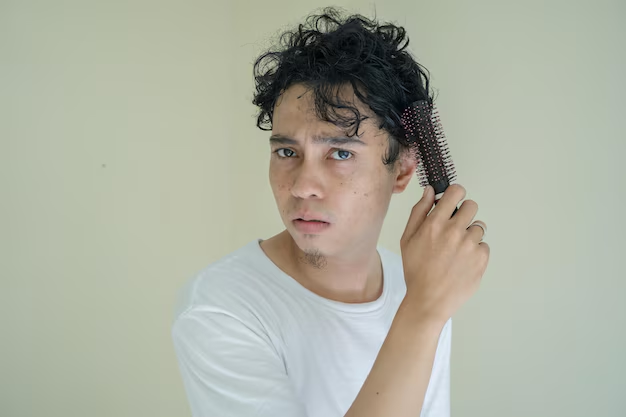
Skincare myths abound—and following them can do more harm than good. Even a diligent routine can backfire if you’re unknowingly making mistakes. At Dr. Hanan Dermatology Speciality & Trichology Clinic in Chennai, our dermatologists guide patients through evidence-based skincare practices that promote skin health.
This blog debunks 10 hidden skincare mistakes—helping you protect your skin barrier, prevent pigmentation, and enjoy real glow.
Mistake 1: Using the Wrong Cleanser for Your Skin Type
Why it matters: A cleanser that’s too drying strips the natural oil barrier; one that’s too rich can clog pores.
Fix:
- Oily/acne-prone → gel or foam with salicylic acid or niacinamide
- Dry/sensitive → gentle, ceramide or glycerin-based products
- Avoid harsh sulfates that cause inflammation or disrupted skin barrier
Mistake 2: Over-Exfoliating with Scrubs or Acids
- Hormonal Changes
Puberty brings a surge in hormones like androgens, which can disrupt the hair growth cycle and cause thinning in both boys and girls. - Nutritional Deficiencies
Low levels of iron, zinc, protein, biotin, or vitamin D can significantly impact hair health. - Stress and Mental Health
Academic pressure, social anxiety, or emotional issues can trigger Telogen Effluvium, a stress-induced form of hair loss. - Poor Diet or Crash Dieting
Skipping meals, extreme calorie deficits, or eating mostly junk food can deprive hair follicles of essential nutrients. - Genetics (Androgenetic Alopecia)
If one or both parents have pattern baldness, it may begin early, especially in males. - Over-Styling and Heat Damage
Constant use of straighteners, curling rods, or tight hairstyles damages hair shafts and roots. - Underlying Medical Conditions
Conditions like PCOS, thyroid imbalance, or autoimmune disorders like alopecia areata may be the root cause.
Related Link: Learn more about Types of Hair Loss and Their Treatments
How to Know If You Have Hair Thinning as a Teen?
Recognizing the early signs of hair thinning is essential for timely treatment.
Early Signs Include:
- A widening parting or receding hairline
- More hair on pillow, comb, or shower drain
- Scalp visibility through the hair
- Hair feeling thinner or lighter than usual
- Reduced ponytail thickness (for girls)
Can Hair Thinning in Teenagers Be Reversed?
Yes—most types of hair thinning in teenagers can be reversed if treated early and correctly. The approach may include medical treatment, lifestyle changes, and professional care under a dermatologist.
Symptoms: Patchy hair loss, broken hairs, and thinning. Most common in adolescents and young adults.
Management: Behavioral therapy, psychological support, and dermatological care.
Best Treatments for Hair Thinning in Teenage
At Dr. Hanan Clinic, we customize hair loss treatment based on the patient’s age, diagnosis, severity, and medical history.
1. Topical Treatments
Mild topical solutions like minoxidil (in low strength) may be used under medical supervision to stimulate hair follicles and improve density.
2. Nutritional Therapy
We prescribe supplements containing biotin, iron, zinc, and amino acids to restore internal imbalances. Diet counseling is often part of the treatment.
3. PRP Therapy for Teens
Platelet-Rich Plasma (PRP) therapy is a safe, non-surgical treatment that uses your own blood’s growth factors to stimulate hair regrowth. It’s becoming a popular option even for young patients with early signs of androgenetic alopecia.
4. Low-Level Laser Therapy (LLLT)
This painless treatment boosts blood circulation in the scalp and revitalizes weak hair follicles.
5. Microneedling
For early-stage thinning, microneedling combined with hair serums can help increase scalp absorption and rejuvenate follicles.
What Not to Do If You're a Teen Experiencing Hair Loss
- Don’t self-medicate with strong OTC hair loss products
- Avoid using adult-strength minoxidil or oral finasteride without a prescription
- Don’t follow viral trends (on TikTok, YouTube, etc.) without expert advice
- Avoid stress-induced pulling or tugging of hair (Trichotillomania)
Expert Tips to Prevent Hair Thinning in Teenagers
- Eat a balanced diet with protein, leafy greens, and healthy fats
- Wash your scalp 2–3 times a week with a gentle, sulfate-free shampoo
- Avoid tight hairstyles like ponytails or buns
- Stay hydrated and get 7–8 hours of sleep
- Incorporate relaxation methods like yoga or journaling to manage stress
When to See a Dermatologist for Hair Thinning
Visit a specialist if:
- Hair thinning has continued for more than 2–3 months
- You have a family history of baldness
- You notice bald patches or scalp inflammation
- You are experiencing emotional distress due to hair changes
At Dr. Hanan Dermatology Speciality and Trichology Clinic, our dermatologists use trichoscopy, blood tests, and clinical evaluation to diagnose the exact reason for your hair thinning. This enables us to design a personalized, teen-friendly treatment plan.
Explore Treatments: Hair Regrowth Treatments in Chennai
Final Thoughts: Hair Thinning in Teenage Is Treatable
While hair thinning in teenage years can feel overwhelming, the good news is that it’s usually reversible with timely care. Whether the root cause is stress, poor nutrition, or hormonal changes, you don’t have to face it alone.
Our team at Dr. Hanan Clinic in Chennai has helped hundreds of teens regain confidence and fuller, healthier hair. Early consultation and a customized plan are the keys to long-term hair wellness.


